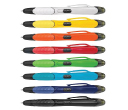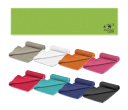Saturday, July 26th, 2014
Surprise! Did You Know? How to Develop 100% Sticky Headlines that Aren’t the Worst Ever!
OK, so our title might be a bit overdone, but it incorporates many of the tactics used for creating sticky subject lines. There is actually some psychologies behind each of the following 8 tactics that will help you develop eye catching, sticky subject lines. Bufferapp helps to walk us through the different ways we can catch an audience’s attention with a headline.
- Surprise! Who doesn’t love a surprise? Apparently readers do love surprises. By surprises in subject lines, we mean a break from the normal and usual headlines. When you write something that is unexpected and out of character from what you normally write, it will attract attention. Of course, attracting attention with an outrageous headline is only half the battle. The content within the blog or article must be engaging and interesting enough to keep their attention.
- Questions. Aren’t you intrigued by questions? Most readers are and they feel the need to answer a question, so they will tend to read on. Questions stimulate the brain.
- Curiosity. Playing into our natural curiosity as human beings is an excellent way to grab the interest of readers. The idea of peaking a reader’s curiosity falls into a specific category. You really need to know your readers well in order for this to work because in order for curiosity to work, they need to know enough about the topic in order to want to learn more.
- Negatives. Depending on your product and company culture or objectives, you may or may not have tried to use negative superlatives in your subject lines. Negative descriptors can often be even more powerful than positive ones. Using words such as worst, horrible, or awful can attract attention and interest better than greatest, best, and other more positive descriptors.
- How To. Writing about how to do something is one of the most popular titles around. People love to learn and a “how to” title tells people right off the bat that they are going to learn how to do something, or learn about something.
- Numbers. Using numbers in the form of statistics in a title helps because people like to be certain about something and dislike uncertainty.
- Audience Referencing. This is a complicated term for using the word “you” in your writing. Everyone is always interested in what an article can do for them, so using “you” or “your” can be very effective.
- Specificity. Although many of these tactics do not promote specificity in the subject line, some studies show that certain types of content and certain types of people will be better off if the headline specifically details what the article is about. Being clever or artistic with headlines is not always appropriate and greatly depends on the industry you are in, your company guidelines, and company goals.


















